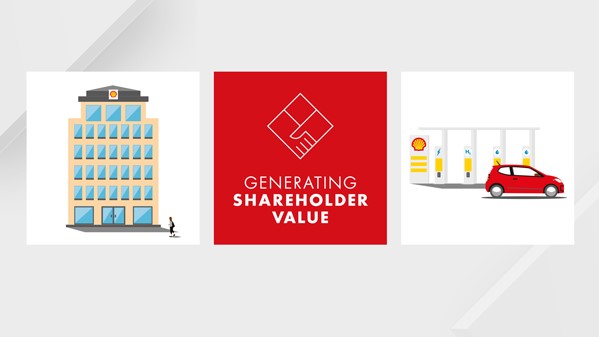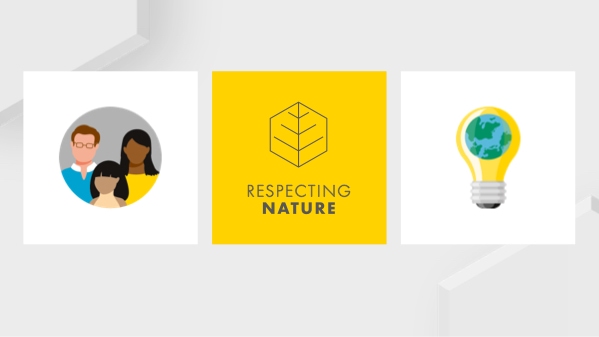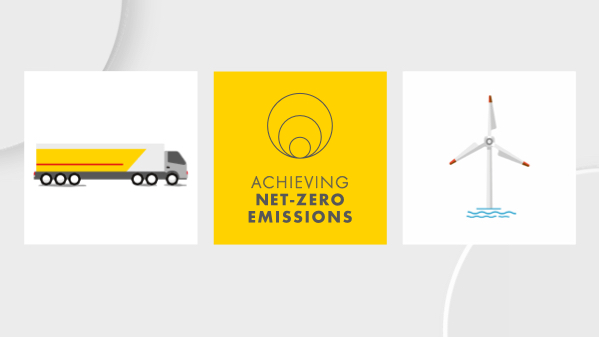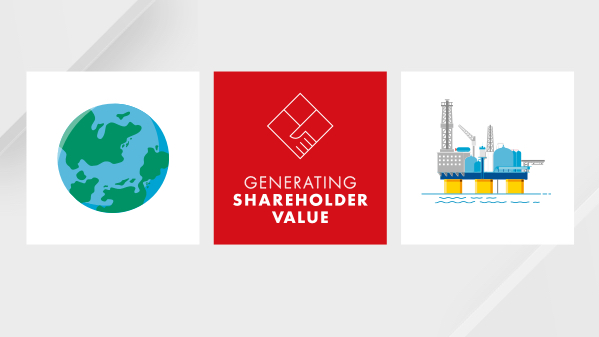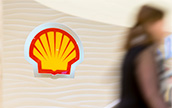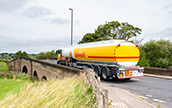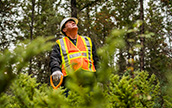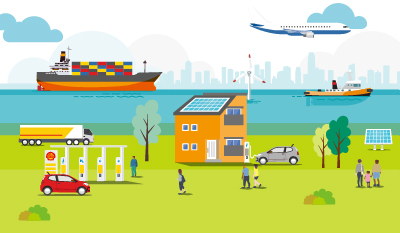Business and property
Our subsidiaries, joint ventures and associates are involved in all aspects of upstream activities, including land tenure, entitlement to produced hydrocarbons, production rates, royalties, pricing, environmental protection, social impact, exports, taxes and foreign exchange.
The conditions of the leases, licences and contracts under which oil and gas interests are held vary from country to country. In almost all cases outside North America, legal agreements are generally granted by, or entered into with, a government, state-owned company, government-run oil and gas company or agency. The exploration risk usually rests with the independent oil and gas company. In North America, these agreements may also be with private parties that own mineral rights. Of these agreements, the following are most relevant to our interests:
- Licences (or concessions), which entitle the holder to explore for hydrocarbons and exploit any commercial discoveries. Under a licence, the holder bears the risk of exploration, development and production activities, and is responsible for financing these activities. In principle, the licence holder is entitled to the totality of production less any royalties in kind. The government, state-owned company or government-run oil and gas company may sometimes enter into a joint arrangement as a participant, sharing the rights and obligations of the licence but usually without sharing the exploration risk. In a few cases, the state-owned company, government-run oil and gas company or agency has an option to purchase a certain share of production.
- Lease agreements, which are typically used in North America and are usually governed by terms similar to licences. Participants may include governments or private entities. Royalties are either paid in cash or in kind.
- Production-sharing contracts (PSCs) entered into with a government, state-owned company or government-run oil and gas company. PSCs generally oblige the independent oil and gas company, as contractor, to provide all the financing and bear the risk of exploration, development and production activities in exchange for a share of the production. Usually, this share consists of a fixed or variable part that is reserved for the recovery of the contractor’s cost (cost oil). The remaining production is split with the government, state-owned company or government-run oil and gas company on a fixed or volume/revenue-dependent basis. In some cases, the government, state-owned company or government-run oil and gas company will participate in the rights and obligations of the contractor and will share in the costs of development and production. Such participation can be across the venture or on a field-by-field basis. Additionally, as the price of oil or gas increases above certain predetermined levels, the independent oil and gas company’s entitlement share of production normally decreases, and vice versa. Accordingly, its interest in a project may not be the same as its entitlement.
Europe
Italy
We have a 39% interest in the Val d’Agri producing concession, operated by ENI S.p.A.
We also have a 25% interest in the Tempa Rossa producing concession operated by TotalEnergies EP Italia S.p.A.
Netherlands
Shell and ExxonMobil are 50:50 shareholders in Nederlandse Aardolie Maatschappij B.V. (NAM). A significant part of NAM’s gas production comes from the onshore Groningen gas field, in which NAM holds a 60% interest. The remaining 40% interest is held by EBN, a Dutch government entity. NAM also has a 60% interest in the Schoonebeek oil field and operates 25 other hydrocarbon production licences.
Production from the Groningen field induces earthquakes that have damaged houses and other buildings and structures in the region. This has led to complaints and claims for compensation for damage from the local community.
Since 2013, the Dutch Minister of Economic Affairs and Climate Policy has set an annual production level for the Groningen field, taking into account all interests, including residents’ safety, security of supply in the domestic gas market and supply commitments in EU member states. The production level in the gas year 2021-2022 (ending October 1, 2022) was set as 3.9 billion cubic metres, subject to revision by the Minister.
In June 2018, NAM’s shareholders and the Dutch government signed a heads of agreement (HoA) to reduce production from Groningen and to ensure the financial robustness of NAM to fulfil its obligations. In the HoA, NAM’s shareholders agreed not to declare dividends for 2018 and 2019. Dividend payments for 2020 and beyond will be made only if a solvency ratio of 25% is reached and maintained, which was not the case for 2021. In September 2018, detailed agreements were signed to further implement the HoA. As part of these agreements, Shell guarantees NAM’s payment obligations vis-à-vis the Dutch government in relation to earthquake-related damages and costs of strengthening houses, up to a maximum of 30%. This maximum equates to Shell’s indirect interest in the Groningen production system.
In conjunction with the HoA, it was agreed that NAM would cease all involvement in handling damage claims or strengthening buildings to make them safe. The Dutch government has stepped into these two roles and has developed legislation and policies to deal with earthquake-related matters. The Dutch government passes on to NAM the cost of the elements for which NAM is liable. NAM has started arbitration with the Dutch government to have its financial liability determined for certain earthquake costs which the Dutch government compensates to claimants and subsequently recovers from NAM.
In September 2019, the Dutch government issued an update announcing that it was able to reduce Groningen production faster, stopping production in 2022, eight years earlier than initially planned. Discussions have not been concluded between the Dutch government and NAM shareholders regarding the compensation payable by the Dutch government to NAM in order to restore the balance of the package of arrangements laid down in the HoA.
A parliamentary inquiry into production from the Groningen gas field officially started in the spring of 2021. Public hearings are scheduled for the summer of 2022.
On October 26, 2021, NAM announced that it will split up its assets into four new legal entities, with the intent to sell those new entities. This excludes the wider Groningen business, which will remain in the existing NAM legal entity.
Norway
We are a partner in 21 production licences on the Norwegian continental shelf. We are the operator in nine of these, of which two are producing: the Knarr field (Shell interest 45%) and the Ormen Lange gas field (Shell interest 17.8%). In 2021, we took the final investment decision on the Phase 3 project for Ormen Lange, adding subsea compression to the field. We hold a non-operated interest in the producing field Troll (operated by Equinor, Shell interest 8.1%) where the Phase 3 gas project came on stream in 2021 adding new production. Decommissioning is planned for Gaupe (cessation of production was in 2018) and Knarr (cessation of production is expected in May 2022).
We have a 33.3% interest in the Northern Lights joint venture, where the other partners are Equinor and TotalEnergies (equal partners). The joint venture is developing a carbon dioxide transportation and storage project.
UK
For more than 50 years we have operated a significant number of our interests on the UK continental shelf under a 50:50 joint-venture agreement with ExxonMobil. In the fourth quarter of 2021, ExxonMobil completed the sale of its share of some of these and other UK continental shelf assets to Neo Energy. In addition to our oil and gas production from North Sea fields, we have various interests in the Atlantic Margin area where we are not the operator. These are mainly in the West of Shetland area (Clair, Shell interest 27.97%, and Schiehallion, Shell interest 44.89%).
In 2021, new production came on stream in Arran (Shell interest 44.57%), which is a tie-back to the Shearwater facility. New production also came on stream at new wells in the existing and producing Clair Ridge (Shell interest 27.97%, non-operated). In the fourth quarter of 2021, Shell completed a deal to increase its equity in the Shearwater field (from 28% to 55.5%) by purchasing BP’s entire interest in the field. Shell will continue to be the operator of the Shearwater field.
In October 2021, the UK’s Offshore Petroleum Regulator for Environment and Decommissioning (OPRED) advised that it was unable to approve the environmental statement consent for the Jackdaw Project. Engagement with OPRED has continued, during which there have been discussions of alternative proposals to address the regulator’s concerns.
In 2021, Shell increased its stake in the early-stage Acorn carbon capture, utilisation and storage (CCUS) and blue hydrogen (BH2) project from 25% to 30%. Shell was appointed technical development lead for certain parts of the CCS project and will take up the role at the end of the first quarter of 2022. The UK government selected the Scottish Cluster (of which Acorn is part) as a reserve cluster for track 1 in its CCUS cluster sequencing process. This means that if another cluster selected as track 1 is discontinued the Scottish Cluster may take its place. The UK government has stated that it will prioritise track 1 cluster for accelerated negotiation of terms.
In December 2021, after comprehensive screening, Shell concluded that the economic case for investment in Cambo, considering also the potential for delays, was not strong enough to proceed. Shell continues to work with its co-venturer and the UK government to map out the next steps on Cambo.
Decommissioning of the Heather, Goldeneye and Curlew FPSO assets continued. In September 2021, Heerema’s Thialf vessel safely lifted Goldeneye’s 3,000-tonne jacket and 1,300-tonne topsides, before transporting them to Norway to be dismantled at the AF Offshore Decom yard in Vats.
In Brent, production ceased after 45 years when on March 31, 2021, we shut down Brent Charlie. This is due to become the fourth and final platform to be decommissioned and removed from the Brent oil and gas field. Brent Charlie’s topsides are expected to be lifted and removed in 2023, after necessary offshore preparatory works have been completed. The UK regulator OPRED is expected to announce a final decision in the first half of 2022 on the proposed derogations to leave in place the gravity-based concrete structures of Brent Bravo, Brent Charlie and Brent Delta.
Rest of Europe
We also have interests in Albania, Bulgaria and Germany.
Asia (including the Middle East and Russia)
Brunei
Shell and the Brunei government are 50:50 shareholders in Brunei Shell Petroleum Company Sendirian Berhad (BSP). BSP has long-term onshore and offshore oil and gas concession rights, and sells most of its gas production to Brunei LNG Sendirian Berhad (see “Integrated Gas”), with the remainder (24% in 2021) sold in the domestic market.
In addition to our interest in BSP, we have a non-operating interest in the offshore Block B concession (Shell interest 35%), where gas and condensate are produced from the Maharaja Lela field.
We have a non-operating interest in a gas holding area for deep-water Block CA2 (Shell interest 12.5%), under a production-sharing contract (PSC).
We also operate in the deep-water Block CA1 (Shell interest 86.95%), under a PSC.
Iraq
We have a 44% interest in the Basrah Gas Company, which gathers, treats and processes associated gas that was previously being flared from the Rumaila, West Qurna 1 and Zubair fields. The processed gas and associated products, such as condensate and LPG, are sold to the domestic market. Any surplus condensate and LPG is exported.
Kazakhstan
We are the joint operator of the onshore Karachaganak oil and condensate field (Shell interest 29.3%). The Karachaganak field is in north-west Kazakhstan and covers an area of more than 280 square kilometres.
We have an interest in the North Caspian Sea production-sharing agreement (Shell interest 16.8%) which includes the Kashagan field in the Kazakh sector of the Caspian Sea. The North Caspian Operating Company is the operator. This shallow-water field covers an area of around 3,400 square kilometres. Phase 1 development of the field led to plateau oil production capacity of around 66 thousand boe/d (Shell interest) in 2021, with the possibility of increases after later phases of development.
We have a 7.4% interest in the Caspian Pipeline Consortium, which owns and operates an oil pipeline running from the Caspian Sea to the Black Sea, across parts of Kazakhstan and Russia.
Malaysia
We explore for and produce oil and gas offshore Sabah and Sarawak under 16 PSCs, in which our interests range from 20% to 85%.
Offshore Sabah:
- We operate two producing oil fields, the Gumusut-Kakap field (Shell interest 30%) and the Malikai deep-water field (Shell interest 35%).
- We have a 21% interest in the Siakap North-Petai deep-water field and a 30% interest in the Kebabangan field, both operated by third parties. We also have exploration interests.
Offshore Sarawak:
- We are the operator of eight producing gas fields and one producing oil and gas field. Nearly all the gas produced offshore Sarawak is supplied to Malaysia LNG (MLNG) and to our gas-to-liquids plant in Bintulu. See “Integrated Gas”. The eight producing gas fields and the one producing oil and gas field are:
- gas fields F6, F23, E8, F13 East and F13 West under the MLNG PSC (Shell interest 40%);
- gas fields F14 and F28 under the SK308 PSC (Shell interest 50%);
- gas field Gorek under the SK408 PSC (Shell Interest 30%); and
- producing oil and gas field E6 under the SK-308 PSC (Shell interest 50%).
- We achieved first oil and gas for Phase 2 of the E6 project in March 2021.
- We are the operator for Block SK-318 PSC (Shell interest 75%). This block contains the discovered Rosmari, Marjoram and Timi fields. In August 2021, we took the final investment decision on the Timi gas development project. Situated approximately 200 kilometres off the coast of Sarawak, Timi is a sweet gas field discovered in 2018. The Timi project comprises a wellhead platform powered by a solar and wind hybrid renewable power system, two wells and a pipeline tie-in to the F23 production hub, supporting future growth in the Sarawak Central Luconia area. The proposed Rosmari-Marjoram development is the first phase of the Sarawak Integrated Sour Gas Evacuation System (SISGES) development and comprises an offshore platform and onshore gas treatment plant in Bintulu, Sarawak.
- In July 2021, we signed a new exploration PSC for Block SK-437 (Shell interest 85%).
- In our non-operated portfolio:
- We took the final investment decision in March 2021 on Jerun, which is part of the Block SK-408 PSC (Shell interest 30%). Jerun is a gas development with an integrated central processing platform. Block SK-408 also contains the producing non-Shell-operated Larak and Bakong fields.
- We also have a 40% interest in the amended 2011 Baram Delta enhanced oil recovery PSC, and a 50% interest in the SK-307 PSC. In March 2021, Shell announced that it intended to explore options to divest its non-operated interests in Baram Delta and SK-307.
Oman
We have a 34% interest in the Block 6 oil concession and its operator Petroleum Development Oman (PDO). The Omani government has a 60% interest through its 100% owned affiliate Energy Development Oman (EDO). PDO is the operator of more than 200 oil fields, mainly located in central and southern Oman.
We have a 50% interest in the Block 42 exploration and production-sharing agreement. Oman Oil (OQ) has the remaining 50% interest. Shell is the operator of Block 42. We have signed an exploration and production-sharing agreement that makes us the operator and gives us a 100% working interest in Block 55.
Russia
Shell and Gazprom Neft have a joint interest in several ventures in Russia:
- We have a 50% interest in Salym Petroleum Development N.V., which is developing the Salym fields and conducting exploration activities in the Khanty Mansiysk Autonomous District of western Siberia.
- We have a 50% interest in the Khanty-Mansiysk Petroleum Alliance VOF partnership. Through this, Shell is a holder of a 50% interest in the CJSC Khanty-Mansiysk Petroleum Alliance.
- Because regulatory sanctions prohibit certain defined oil and gas activities in Russia since 2014, we have suspended our support to Salym Petroleum Development N.V. and CJSC Khanty-Mansiysk Petroleum Alliance in relation to shale oil activities.
- We have a 50% shareholding in LLC Gydan Energy. The joint venture changed its name from LLC Gazpromneft-Aero Bryansk in September 2021. It holds licences to the Leskinsky and Pukhutsayakhsky onshore blocks in the north-eastern part of the Gydan Peninsula. The joint venture is currently carrying out an exploration programme in these blocks.
As announced on February 28, 2022, Shell intends to exit its joint ventures with Gazprom and related entities, including our 50% interest in Salym Petroleum Development and our 50% interest in Gydan energy venture. For more information see Note 32.
Syria
Shell holds a 65% interest in Syria Shell Petroleum Development B.V. (SSPD), a joint venture between Shell and the China National Petroleum Corporation. SSPD holds a 31.25% interest in Al Furat Petroleum Company, a Syrian joint stock company, whose role was to perform petroleum operations. Shell also holds a 70% interest in two exploration licences via Shell South Syria Exploration B.V. In December 2011, in compliance with international sanctions on Syria, including European Council Decision 2011/782/CFSP, Shell suspended all exploration and production activities in Syria.
Rest of Asia
We also have interests in Kuwait, the Philippines, Turkey and the United Arab Emirates.
In May 2021, in the Philippines, Shell announced an agreement to sell its shares in Shell Philippines Exploration B.V., which includes its 45% interest in Service Contract 38 (Malampaya), which includes the producing Malampaya gas field, to Malampaya Energy XP Pte. Ltd. Subject to partner and regulatory consent, the transaction is targeted to complete in 2022.
Africa
Nigeria
Our share of production, onshore and offshore, in Nigeria was 175 thousand boe/d in 2021, compared with 223 thousand boe/d in 2020. Security issues, sabotage and crude oil theft in the Niger Delta failed to improve and remained significant challenges to our onshore operations in 2021. We will monitor the situation closely and evaluate implications for the integrity of our infrastructure and the sustainability of our current operations.
We announced our intention to reduce our involvement in onshore oil and gas production in Nigeria, in line with our risk appetite. We are in discussion with the Nigerian government and other stakeholders on how this can be best achieved.
In August 2021, Nigeria adopted the Petroleum Industry Act (PIA) that creates a new regulatory framework for the industry. The PIA introduces significant changes, some of which require clarification during the 18-month implementation phase. We are actively engaged to ensure that our operations will comply with any new requirements.
Onshore
The Shell Petroleum Development Company of Nigeria Limited (SPDC) is the operator of a joint venture (JV) (Shell interest 30%) that, after the completion of the sale of its interest in OML 17 on January 15, 2021, has 16 Niger Delta onshore oil mining leases (OML).
In 2019, OML 11 expired when the Federal Government (FGN) denied an application of SPDC JV for renewal. While SPDC JV is challenging this decision in court, the FGN and SPDC JV are exploring an out-of-court solution. SPDC continues to operate OML 11 pending these discussions.
Offshore
Our main offshore deep-water activities are carried out by Shell Nigeria Exploration and Production Company Limited (SNEPCO), (Shell interest 100%). SNEPCO has interests in three deep-water blocks that are under PSC terms: the producing assets Bonga (OML 118) and Erha (OML 133) and the non-producing asset Bolia Chota (OML 135). SNEPCO operates OMLs 118 (including the Bonga field floating production, storage and offloading (FPSO) vessel, Shell interest 55%) and 135 (Bolia and Doro, Shell interest 55%) and has a 43.8% non-operating interest in OML 133 (including the Erha FPSO). In May 2021 OML 118 was renewed for 20 years. In 2021, the licence for the offshore oil block OPL 245 expired.
Authorities are investigating our involvement in Nigerian oil block OPL 245 and the 2011 settlement of litigation pertaining to that block. See Note 26 to the “Consolidated Financial Statements”.
SPDC also has three shallow-water licences (OMLs 74, 77 and 79) and a 40% interest in the non-Shell-operated Sunlink joint venture that has one shallow-water licence (OML 144).
In our Nigerian operations, we face various risks and adverse conditions which could have a significant adverse effect on our operational performance, earnings, cash flows and financial condition (see “Risk factors”). There are limitations to the extent to which we can mitigate these risks. We carry out regular portfolio assessments so we can maintain our long-term competitiveness in Nigeria. We support the Nigerian government’s efforts to improve the efficiency, functionality and domestic benefits of Nigeria’s oil and gas industry. We monitor legislative developments and the security situation. We liaise with host communities, governmental and non-governmental organisations (NGOs) to help promote peaceful and safe operations. We continue to be transparent about how we manage and report spills, and how we deploy oil-spill response capability and technology. We implement a maintenance strategy to support sustainable equipment reliability and have begun a multi-year programme to reduce routine flaring of associated gas. See “Climate change and energy transition”.
Rest of Africa
We also have interests in Algeria, Egypt, Mauritania, Namibia, São Tomé and Príncipe, South Africa and Tunisia.
On September 23, 2021, Shell Egypt N.V. and an affiliate completed a full divestment of 13 onshore blocks in the Western Desert. Shell Egypt N.V. subsequently filed a notice of final relinquishment of the North East Obaiyed block, which is the only remaining onshore block still held by Shell Egypt N.V.
In 2021, Shell announced plans to hand back to the Government of Tunisia Upstream assets associated with the Miskar and Hasdrubal concessions. Discussions are in progress regarding the terms of the hand-back.
North America
Canada
In Canada, we produce and market natural gas, natural gas liquids and condensate.
We hold mineral acres, primarily in the Montney play in British Columbia and Alberta. We currently operate four natural gas processing area facilities in our Groundbirch asset in British Columbia. In April 2021, we sold our Duvernay shale light oil position in Alberta.
USA
We produce oil and gas in deep water in the Gulf of Mexico. We produce heavy oil in California through a 51.8% interest in Aera Energy LLC which operates wells in the San Joaquin Valley. The majority of our oil and gas interests are acquired under leases granted by the owner of the minerals underlying the relevant area, including many leases for federal offshore tracts. Such leases usually run on an initial fixed term that is automatically extended by the establishment of continued production, subject to compliance with the terms of the lease (including, in the case of federal leases, extensive regulations imposed by federal law).
We have sold or relinquished all frontier licences in Alaska and have no plans for frontier exploration off Alaska’s coast. We retain two exploration acreage positions in the long-established North Slope area of Alaska. One is a non-operating interest of 50% in 13 federal leases held since 2007 and operated by Eni. The other position consists of 18 state leases in nearby West Harrison Bay that have been held since 2012, which we plan to turn over to an alternative operator.
Gulf of Mexico
The Gulf of Mexico is our major production area in the USA. We have an interest in 311 active federal offshore leases.
We are the operator of eight production hubs – Mars, Olympus, Auger, Perdido, Ursa, Enchilada/Salsa, Appomattox and Stones – and the West Delta 143 processing facilities (Shell interests ranging from 33% to 100%). We continue to produce from Coulomb (Shell interest 100%) which ties into the Na Kika platform, where Shell has a 50% non-operating interest.
We continued exploration, development and abandonment activities in the Gulf of Mexico in 2021.
We made discoveries at the Leopard and Blacktip North prospects in the Perdido Corridor. The Leopard well encountered more than 600 feet (183 meters) net oil pay at multiple levels and the Blacktip North well encountered approximately 300 feet net oil pay at multiple levels. Evaluation is ongoing to further define development options. The Leopard and Blacktip North discoveries are opportunities to increase production in the Perdido Corridor, where Shell’s Great White, Silvertip and Tobago fields are already producing.
We also took the final investment decision (FID) for Whale, a deep-water development in the Perdido Corridor that features a 99% replicated hull and an 80% replication of the topsides of our Vito project. The Whale development (Shell interest 60%) is currently scheduled to begin production in 2024.
We made progress on the development of Powernap and Vito, which are both in the execution phase. Powernap (Shell interest 100%) is a subsea tie-back to the Olympus production hub, while Vito (Shell interest 63%) is a stand-alone host. Both are expected to achieve first oil in 2022.
The 2021 Atlantic hurricane season adversely impacted production at our US Gulf of Mexico assets. We experienced extended shutdowns at our Mars, Olympus, and Ursa production hubs because of structural damage to our West Delta-143 (WD-143) processing facilities after Hurricane Ida. We safely reinstated production at Olympus on October 1, (33 days after Hurricane Ida), and at Mars and Ursa on November 4, (67 days after Hurricane Ida). This was ahead of estimated timelines.
Shales
Our activity in 2021 was focused in the Permian Basin. On December 1, 2021, we completed the sale of Shell’s interest in the Permian to ConocoPhillips for a base consideration of $9.5 billion. As a result of this divestment, Shell no longer has active shales development in the USA.
Rest of North America
We also have deep-water licences and one shallow-water licence in Mexico.
South America
Brazil
Our operated portfolio consists of offshore assets in:
- the Bijupirá and Salema fields (Shell interest 80%), which ceased production in December 2021 to begin abandonment operations;
- the BC-10 field (Shell interest 50%) in the Campos Basin;
- the Gato do Mato area in the Santos Basin and the adjacent Sul de Gato do Mato area (Shell interest 50%), subject to unitisation, with development options under evaluation; and
- a total of 22 exploration blocks in the following areas:
- Barreirinhas Basin (10 blocks with Shell interests ranging from 50% to 100%);
- Santos Basin (two blocks with Shell interests 45% and 55%);
- Potiguar Basin (Shell interest 100%); and
- Campos Basin (three blocks with Shell interest 40% and one block with Shell interest 100%). An additional five blocks were awarded to Shell in the National Petroleum Agency (ANP) permanent offer round in October 2021. Contracts were expected to be signed in the first quarter of 2022.
Our non-operated portfolio consists of the following fields in the offshore Santos Basin:
- Sapinhoá field (Shell interest 30%, operated by Petrobras), straddling the BM-S-9 and Entorno de Sapinhoá blocks, already unitised;
- Lapa field (Shell interest 30%, not subject to unitisation, operated by TotalEnergies) in Block BM-S-9A;
- Berbigão and Sururu fields (Shell interest 25%, subject to ongoing discussions about unitisation agreements, operated by Petrobras) in Block BM-S-11A;
- Atapu field (Shell interest 4%, unitised in September 2019) in Block BM-S-11A. In December, Shell placed a successful bid in the ANP Transfer of Rights round for the acquisition of 25% of Atapu ToR area to increase its participation in the Atapu field from 4.3% to 16.7%. The contract is expected to be signed in the second quarter of 2022;
- Lula field in Block BM-S-11, renamed the Tupi field (subject to unitisation in effect since April 2019, Shell interest 23%, operated by Petrobras);
- Iracema field in Block BM-S-11 (Shell interest 25%, not subject to unitisation, operated by Petrobras); and
- Mero field in the Libra PSC area (Shell interest 20%, unitisation with an adjoining area still subject to government approval, operated by Petrobras).
In addition to the producing assets, we hold interests in two non-operated exploration blocks in the Santos Basin. These are operated by Petrobras with Shell interests of 20% and 40%.
We also hold interests in two non-operated exploration blocks in the Potiguar Basin, operated by Petrobras (Shell interest 40%).
The activities of operated and non-operated fields are currently supported by 17 producing deep-water FPSOs. We expect two additional FPSOs (Mero 1 and Mero 2) to be brought online in 2022-2023. In August 2021, we announced the final investment decision to contract the Mero 4 FPSO vessel to be deployed at the Mero field.
Rest of South America
We also have interests in Argentina and Suriname.
Trading and supply
We market and trade crude oil from most of our Upstream operations.

